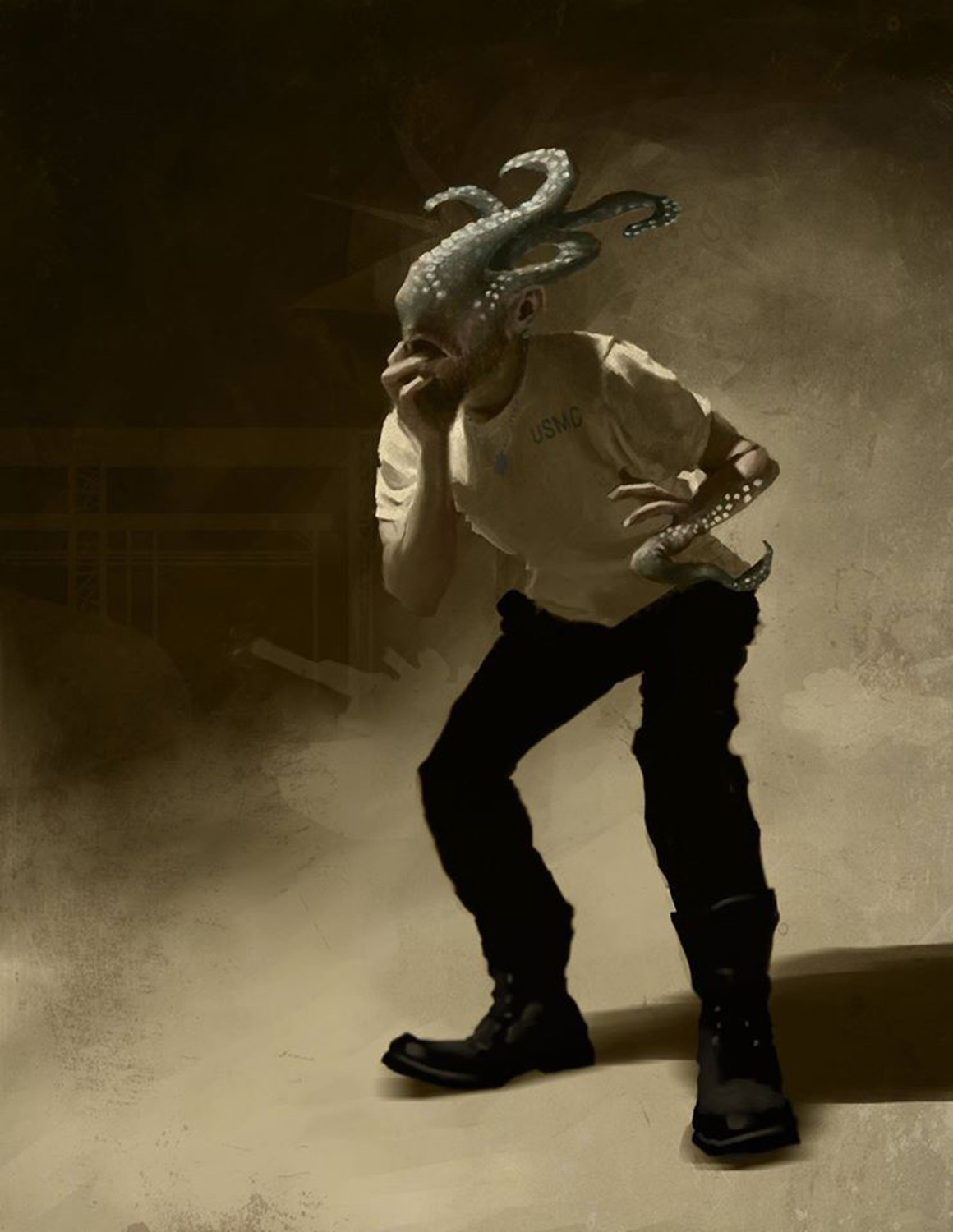
Fungus-infected zombies descend on comic convention
By Connor Sadler, December 4 2014 —
Octospore Book 1: Suburban Squid is a graphic novel by Albertan artists Jesse James Higgins and Scott Dewey that explores how we use modern technology to communicate in times of crisis.
The comic takes an unusual approach to disaster. Instead of a tornado or earthquake causing destruction, hundreds of attendees at a comic convention are turned into tentacle infested “octozombies” who attack American suburbia.
Higgins and Dewey drew inspiration for the octozombies from a fungus called cordyceps. Found in the Amazon jungle, cordyceps spores infect the brains of ants. The fungus controls the ant’s mind, making it climb up a branch. Once the ant is stationary at the top, a new cordyceps plant grows from its body, releasing spores to infect other ants.
“I couldn’t think of anything more terrifying than seeing what was happening to those ants actually happen to a person,” Higgins says. “It would freak me right the F out.”
The “octopocalypse” is set in motion by Octavius Du Pont, a mentally unstable heir to a weapons manufacturing company. Octavius is disgusted with how fast-paced people’s lives have become due to modern technology. He releases the fungus at what he believes to be the centre of modern escapism and pop culture — a comic convention.
As the zombies descend upon the population, panicked citizens turn to their smartphones to contact police and loved ones. Unlike a traditional graphic novel that uses speech bubbles to convey dialogue, the text in Octospore is at the side of the artwork written in which space outside the illustration.
“There’s a series of text messages between a father and daughter as the daughter is transforming into an octozombie,” Higgins says. “You see the beginning of their communication, and then you see the father as the communication gets stranger and stranger.”
Octavius thinks releasing the cordyceps spores will make people slow down and bring them back to reality.
“One of [Octavius’] mantras is that in order to bring humanity back to a state of realism, you have to kill their heroes,” Higgins says. “If he replaces this sort of comic book fallacy of humanity, then he can insert a projection of humanity that is more practical and more reality-based. Almost like a way to imbue people with super human capabilities, minus the superhero.”
